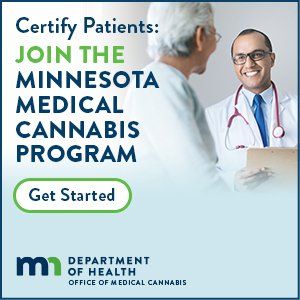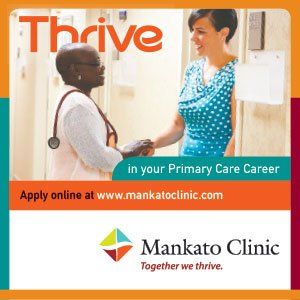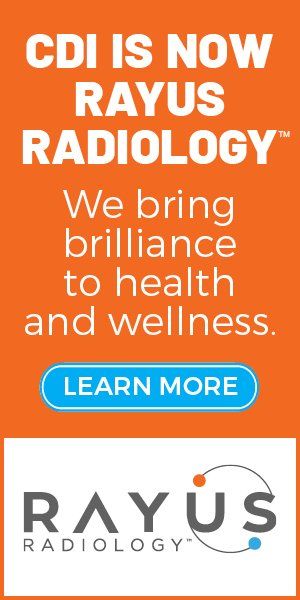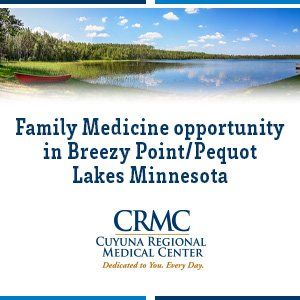dvances in medical science are increasing exponentially. New methods of diagnosing and treating illness are developed faster than they can be practically incorporated into best practice. At the same time demand for health care services exceeds supply and workforce shortage issues add difficult new dynamics to the process of keeping pace with change. Physicians are expected to schedule so much of their time around seeing patients; it can be sometimes forgotten that providing the best care requires research and communication beyond what occurs in the exam room. One way this has manifested is seen in the process of connecting primary and specialty care. While there is no question that this kind of collaboration can create more effective care and ultimately improve the practice of medicine, the pathways to this communication have become more difficult than ever.
cover story one
Connecting Primary and Specialty Care
Improving medical practice
By Elizabeth Seaquist, MD
Specialty care is sought by primary care providers in situations where assistance is needed to make a diagnosis or develop a treatment plan. It may also be utilized to confirm the diagnosis and ensure the developed plan is optimal for their patient. Most often, the primary care provider will refer a patient to a specialty provider for an evaluation, though sometimes a primary care provider may not be sure a specialty care provider needs to be seen. While it is always better to err on the side of caution, improved methods of communication can not only provide support in decision-making, they can help avoid unnecessary visits to a specialist. Confirmation by a specialist that the plan developed by the primary care doctor builds the level of trust in the physician patient relationship. Sometimes an appointment with a specialist is not possible on a timely basis. Researchers estimate that up to 40% of specialist referrals might be avoidable. Improving communication between primary and specialty care can address these issues, as well as improving both patient relationships and the primary care knowledge base.
Given the challenges of improving communication and the benefits of the resulting improved outcomes there are an emerging number of new tools and approaches that can be utilized to address these issues. One promising example is the electronic consultation or eConsult. Pioneered in 2005 at San Francisco General Hospital and through the San Francisco Health Network, the idea seemed to produce more efficient and effective care. eConsults are asynchronous exchanges initiated by a primary care provider (PCP) between that provider and a specialist colleague. They differ from synchronous communication such as in-person, video or phone consults. An eConsult can be initiated through a secure HIPPA compliant message that can share lab reports, images and other medical record data. Within three days a response can be received that will provide recommendations.
Improved referral processes and protocols can accommodate patients and optimize the opportunities for early interventions.
This model proved so successful that it spread to academic medical centers and to commercial and Medicaid payers.
The Association of American Medical Colleges (AAMC) became one of many organizations to adopt the eConsult concept and quickly became a leading force in addressing the many challenges that eConsults face. By 2014 the AAAMC had launched Project CORE (Coordinating Optimal Referral Experience) to build on the promise of the eConsult and in five years had helped improve patient care for more than 2 million patients. It was during this period that the University of Minnesota Medical School became a participant in and contributor to the project.
Initially, institutions participating in eConsult development saw an 84% increase in timely access to specialty care, avoiding nearly 7,500 unneeded referrals. As the process of fine-tuning the new model evolves, several important benefits are emerging. Patients experience shorter wait times to get a specialist appointment and communication is streamlined. This results in the specialist encounter yielding a higher-value in person visit and leads to better documentation and communication between providers. Though the majority of eConsult visits do not require an in-person specialty visit, when one is necessary the process helps triage patients, improving safety and outcomes.
Another benefit is that, within a specialty practice, the level of sub-specialization is increasing. There is often great variation in the knowledge base and expertise between practice members. The eConsult speeds the process of getting an opinion from the doctor most qualified to respond.
How it works
These exchanges use structured templates within the electronic medical record to create a seamless, point-of-care pathway that facilitates high-quality coordination and communication between providers. For appropriate questions, which are typically about straightforward and low-acuity issues, eConsults allow for significantly more efficient specialist input and more cost-effective care delivery. At any time, a specialist can convert an eConsult to a referral, and patients have the option to request an in-person visit rather than an eConsult. Perhaps the most difficult issue eConsults faces revolves around embedding the option into the electronic medical record (EMR), especially considering the large number of EMR providers and existing compatibility problems. This may entail some customization and IT resources, however the end result is well worth the investment. It’s important to note eConsults are not a way to expedite face-to-face consults or inquire about logistics of care. They’re also not meant for patients who are established within the specialty practice. Additionally, eConsults should not be about issues easily answered by consulting a textbook or clinical guidelines.
This model can optimize the use of specialty care for primary care providers and their patients. This provider-and-patient-centered intervention creates advantages for these stakeholders:
- Patients: Improved access to care, greater convenience, and fewer unnecessary visits, tests and out-of-pocket costs.
- Primary care physicians: Timely access to specialty input, clearer roles in patient co-management, and improved continuity and comprehensiveness of care for patients.
- Specialist physicians: Structured approach to consults and referrals, improved access for high-acuity patients and new patients, and more efficient referrals.
- Leadership: Improved quality, reduced costs, improved access in high demand specialties, opportunity to extend referral network, increased provider alignment, better position for negotiations with payers, and improved patient and provider satisfaction.
- Payers: Reduced referrals and associated costs and improved access for beneficiaries.
Sometimes an appointment with a specialist is not possible on a timely basis.
To date, there is significant variation nationwide in terms of approaches to eConsult implementation and management. There are also a range of issues pertaining to reimbursement. The recent establishment of CPT codes by CMS is a promising step toward easier industry-wide access-from large systems such as the Mayo or VA to small rural clinics. As the volume of data grows from an expanding variety of users it is clear that eConsults are improving outcomes and reducing costs. Primary care physicians, specialty care physicians and patients all report a high level of satisfaction.
Care Maps
Care maps is a generic term and can be used in several ways. Care maps can be developed for nursing applications, for direct use by patients, either discharged from a hospital or with chronic conditions, and more. Specific to physician use, they represent another effective method to enhance PCP/Specialty communications and deliver the best quality care. They are a relatively simple but innovative tool and were originally developed around six common diseases Sometimes called a care pathway, they incorporate several elements, such as evidence-based medicine guidelines, standard workflows, disease management and reduction of gaps in care in order to support consistency of care for patients. Care maps were designed to efficiently and effectively improve quality of care, reduce total cost of care and improve patient experience. They provide a valuable resource for knowing when to initiate contact with specialty care and take into account the variation of health care provider knowledge and experience.
Care maps are generated by a collaborative group of stakeholders, including primary care and specialist providers, quality experts, and information technology specialists. They are designed to review the clinical data associated with a patient and make recommendations on patient care with respect to characteristics related to the patient. Once a diagnosis has been made, an appropriate care map can be embedded into the medical record. These maps should be simple to follow, short and user-friendly.
For example, a care map has been developed that improves referral and recognition of chronic kidney disease. While chronic kidney disease (CKD) is fairly prevalent, we aim to identify those patients at highest risk for progression using a risk calculator and prioritize early referral for this population. We aim to improve the care of CKD patients through collaboration. We have designed a provider alert which will prompt providers to acknowledge a decreased glomerular filtration rate and document a diagnosis of CKD. Appropriate diagnosis will then afford the opportunity to use a smartest, which prompts referral criteria, labs, and medications that may be appropriate for CKD. Within health maintenance, regular lab work will be ordered based on “Kidney Disease Improving Global Outcomes” guidelines for CKD 3, 4 and 5 patients.
In some cases, patients are not referred to nephrology for early education and possible intervention. We aim to partner with primary care to increase awareness of CKD with the goal of slowing progression of CKD and avoiding acute kidney injury episodes. Improved referral processes and protocols can accommodate patients and optimize the opportunities for early interventions.
Studies of results from care map utilization that include quality of care improvement and provider use satisfaction are in early evaluation stages, however initial research indicates they are an effective tool. Further research is underway to expand the range and use of care maps, which, beyond enhancing PCP/Specialty communication, will consider how they can lower morbidity, mortality, readmission rates, and more.
Next steps
The need for communication between primary and specialty care is a critical part of health care delivery and one with ongoing challenges. The key to successfully addressing them is in working together. We must all share responsibility for identifying the areas that are most ripe for standardized improvements and then implement them.
Considering the challenges of coordinating physician schedules to allow time to review patient data, it is important to develop new solutions to meet these needs. These solutions must be timely, accurate and available to every physician and patient, regardless of location or employment status.
Not only will this improve outcomes and lower costs, it will lead to better professional camaraderie and improved physician job satisfaction. When we can lower the barriers and streamline the process of sharing knowledge, everyone wins.
Elizabeth Seaquist, MD,
is the chair of the Department of Medicine at the University of Minnesota Medical School and an endocrinologist practicing at M Health Fairview.
MORE STORIES IN THIS ISSUE
cover story one
Connecting Primary and Specialty Care: Improving medical practice
By Elizabeth Seaquist, MD
cover story two
Patients and Medical Jargon: A study of misunderstandings




















